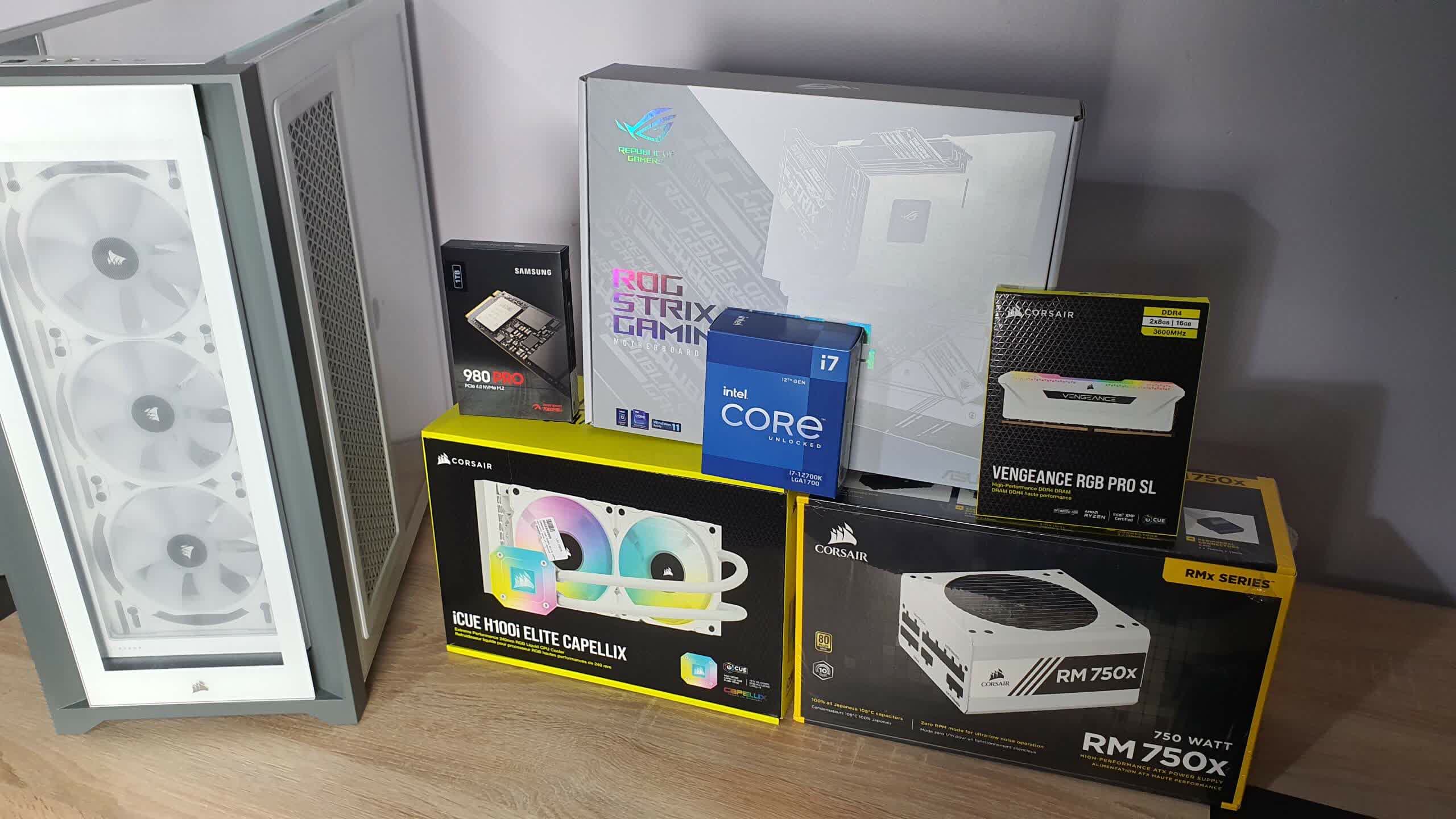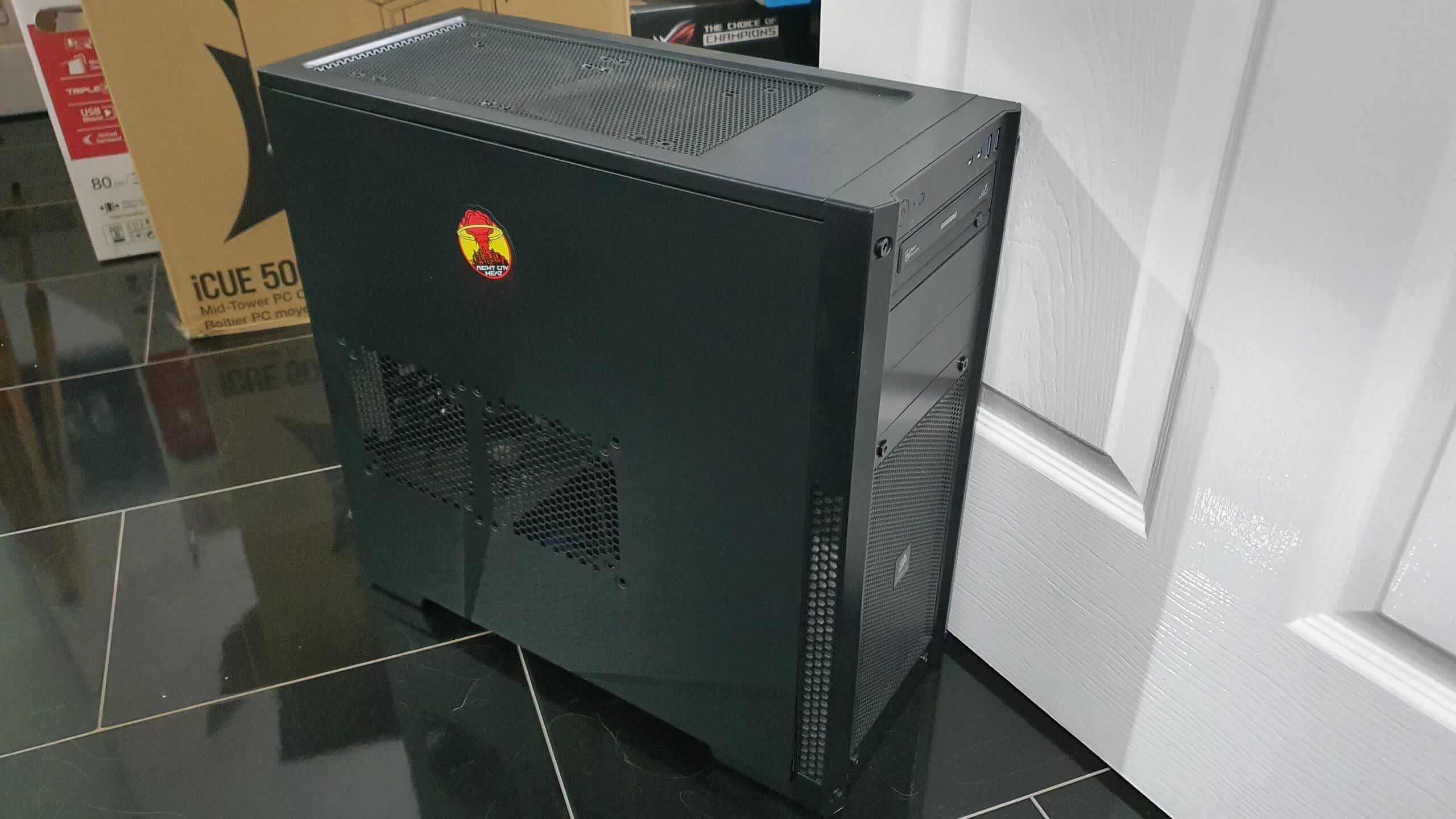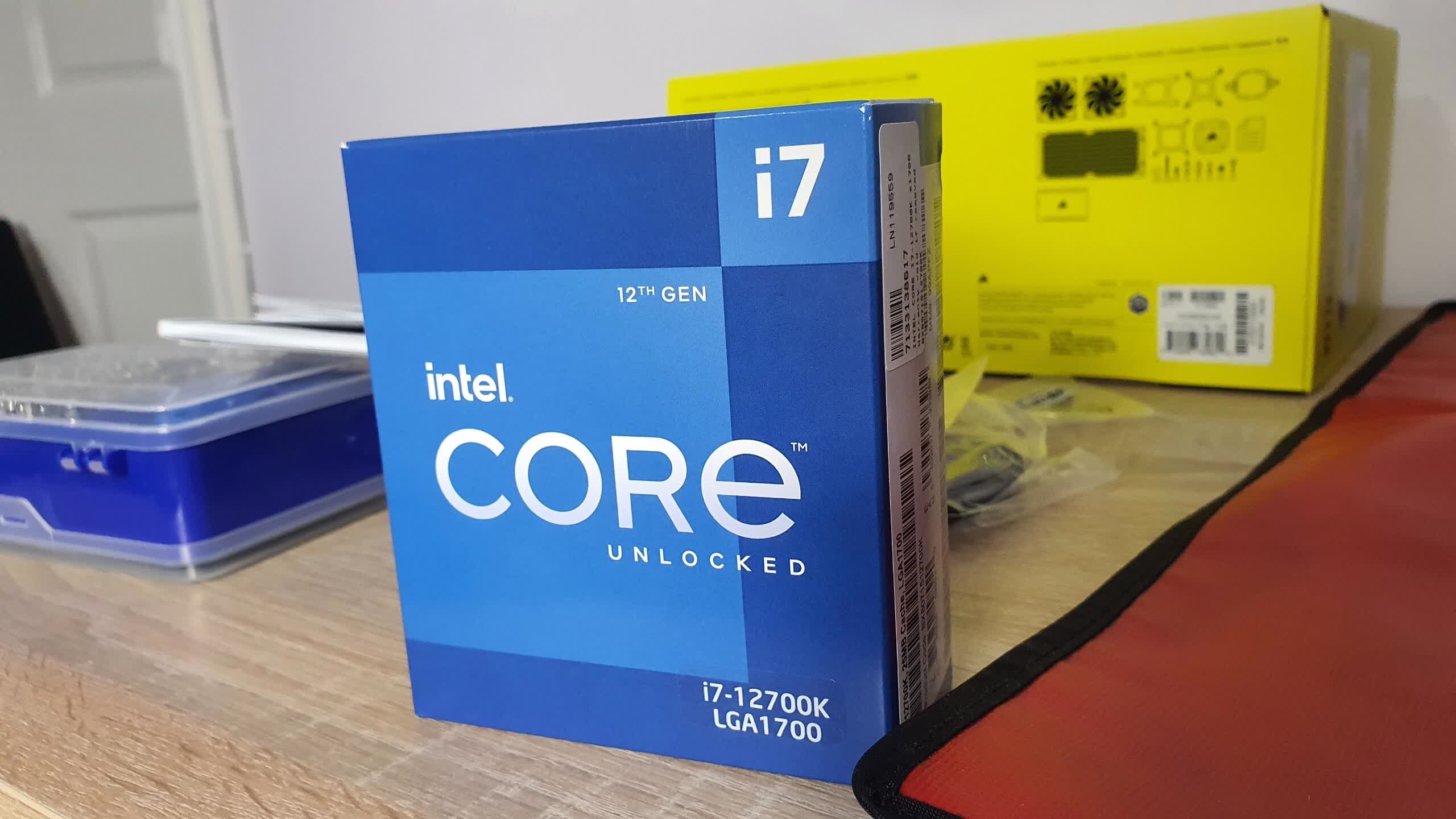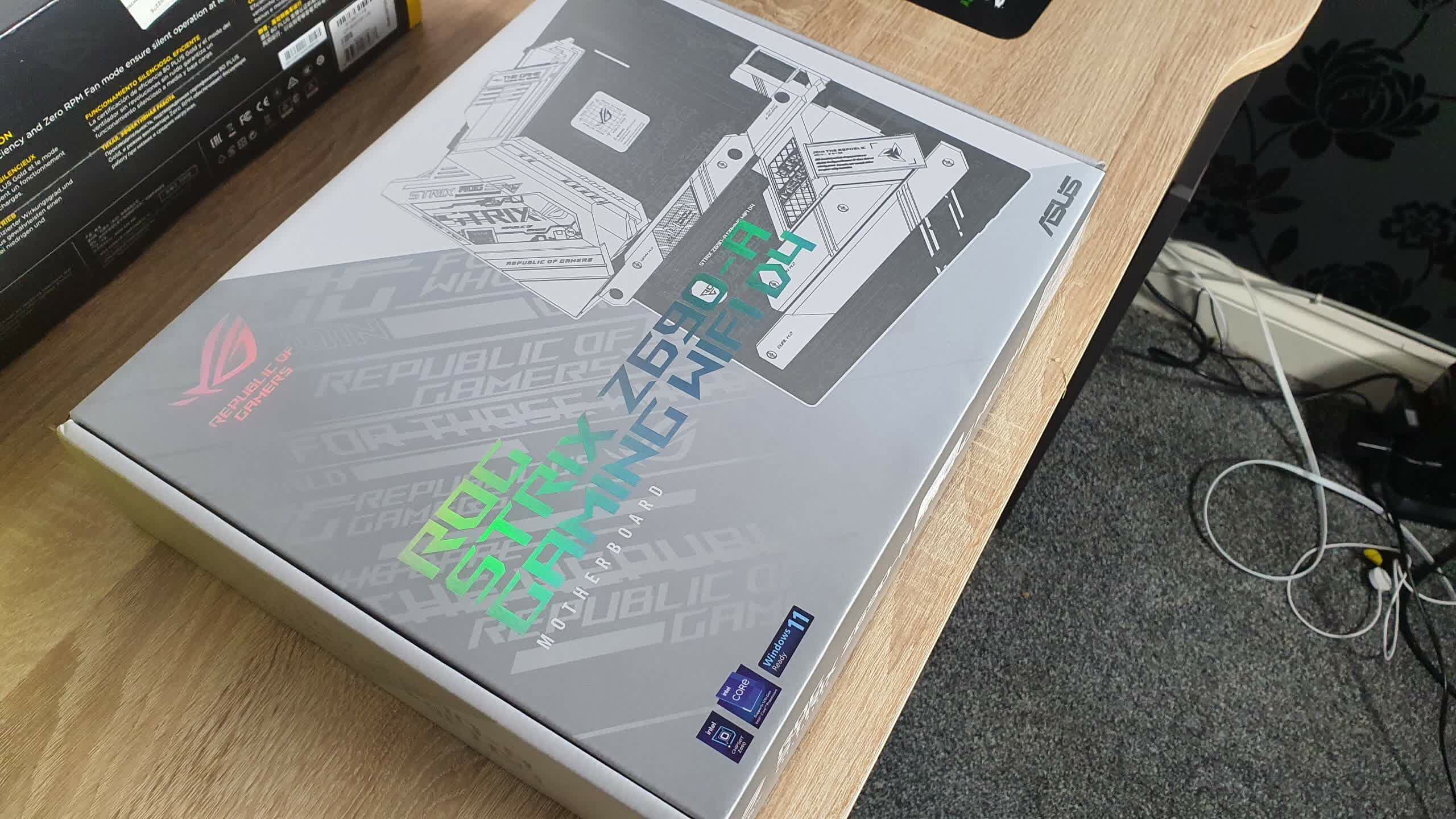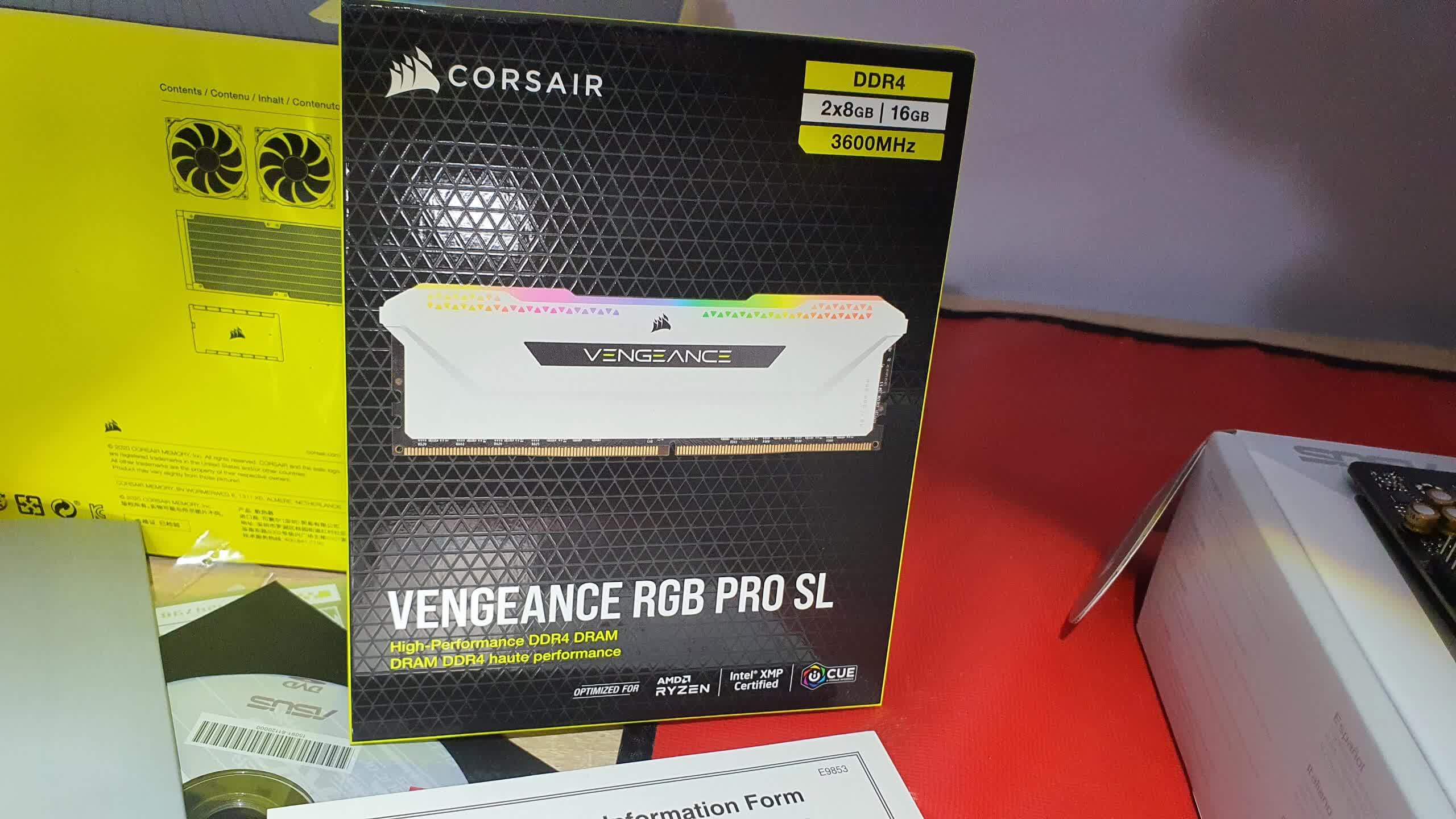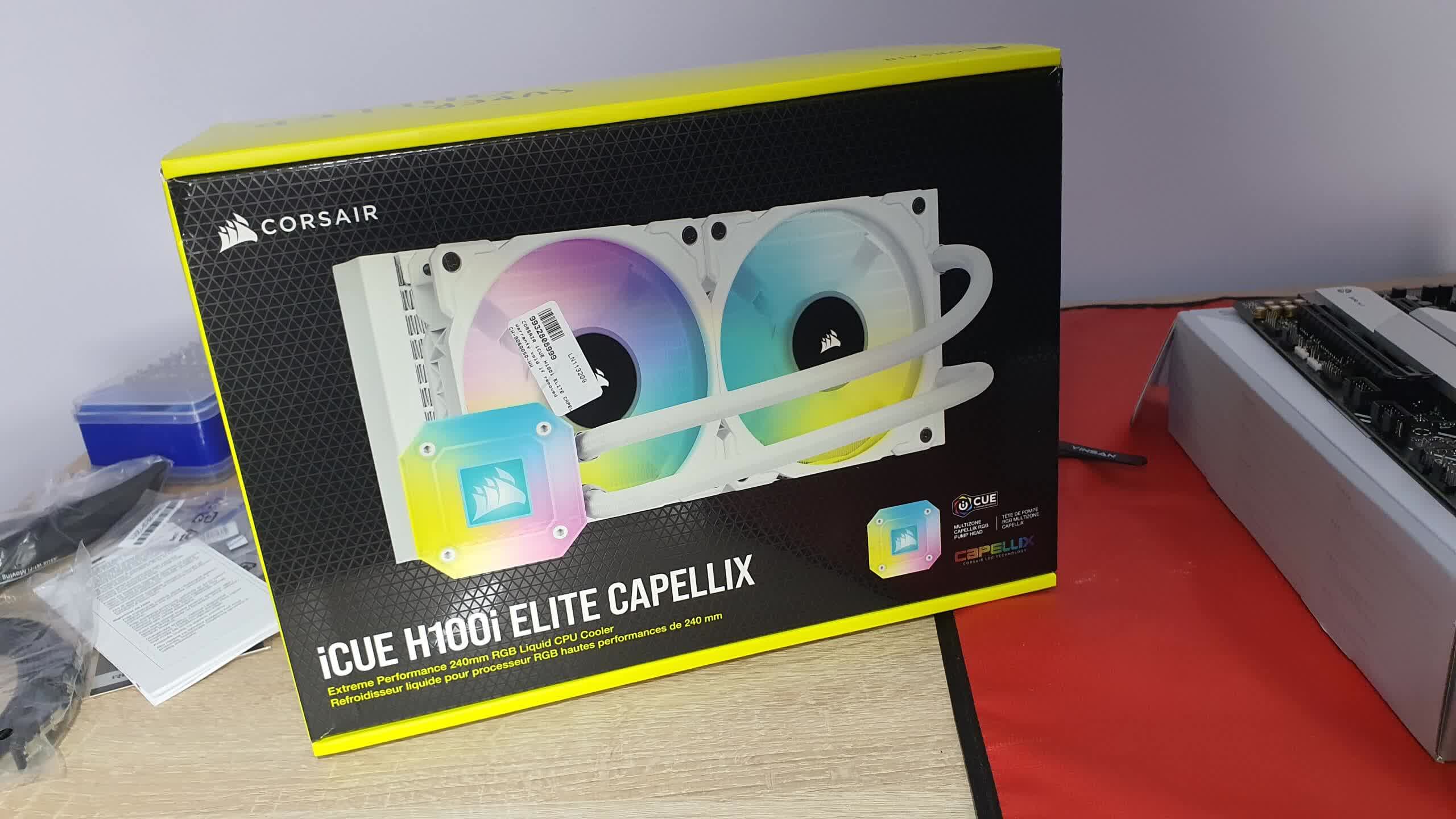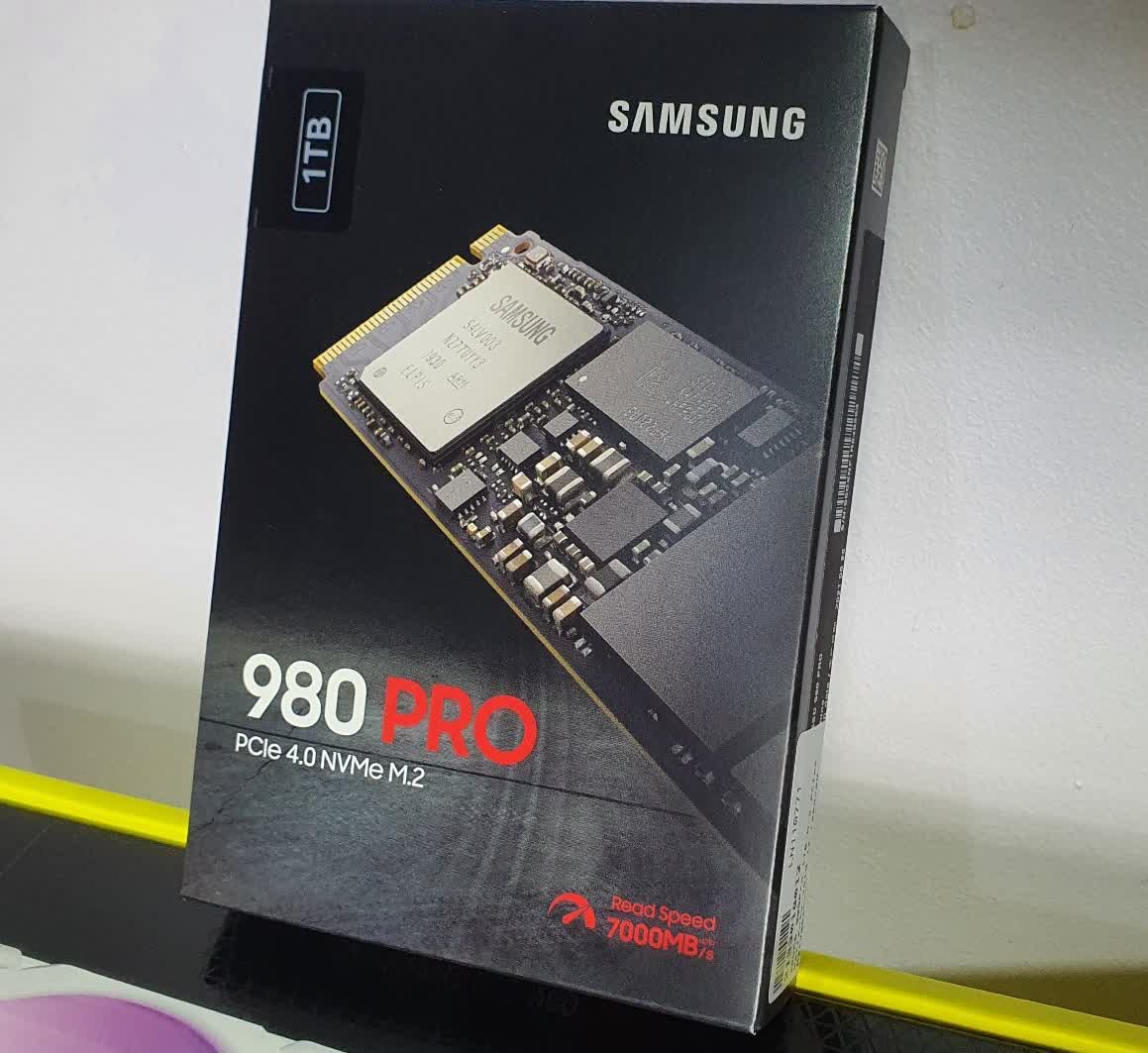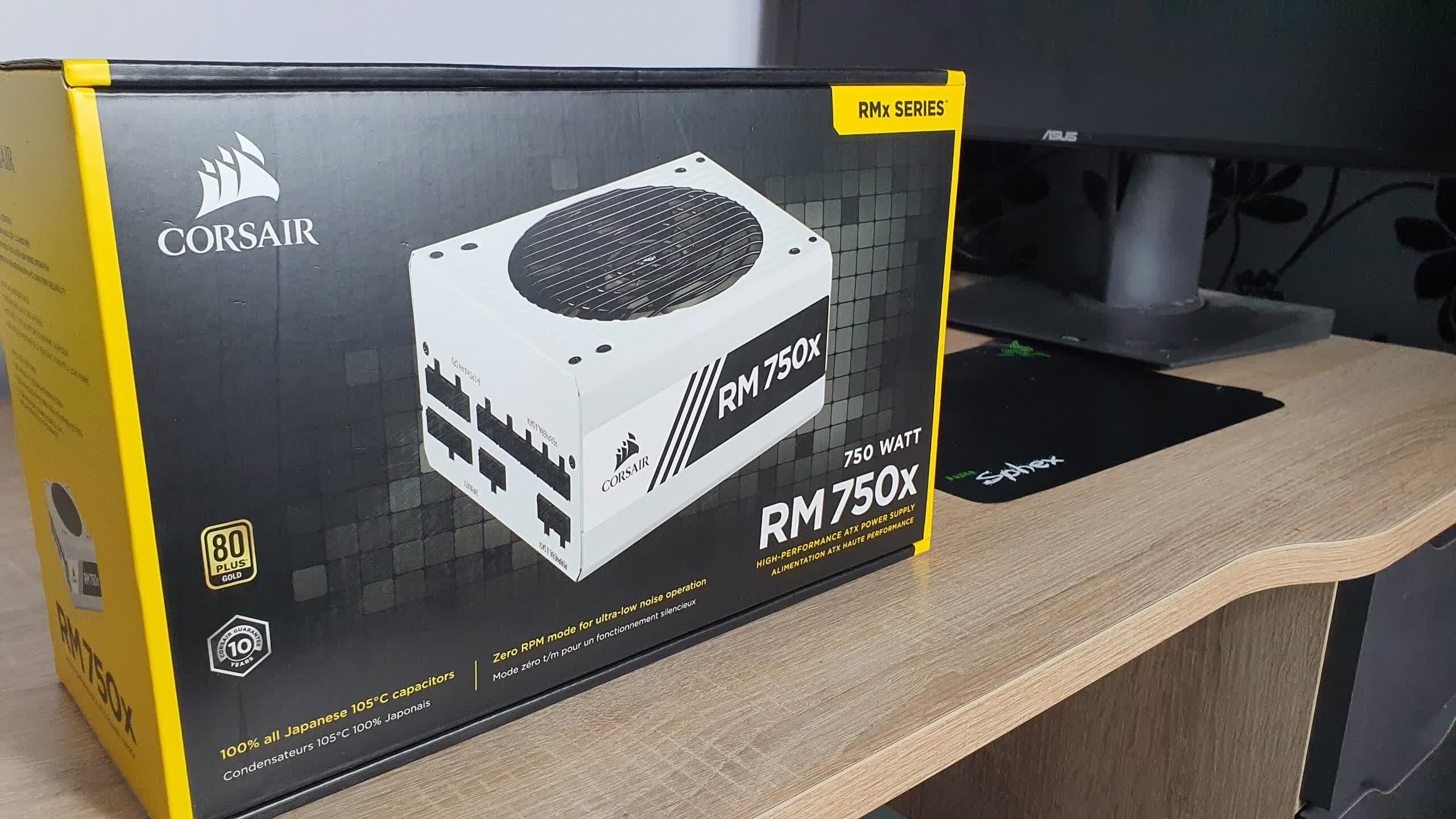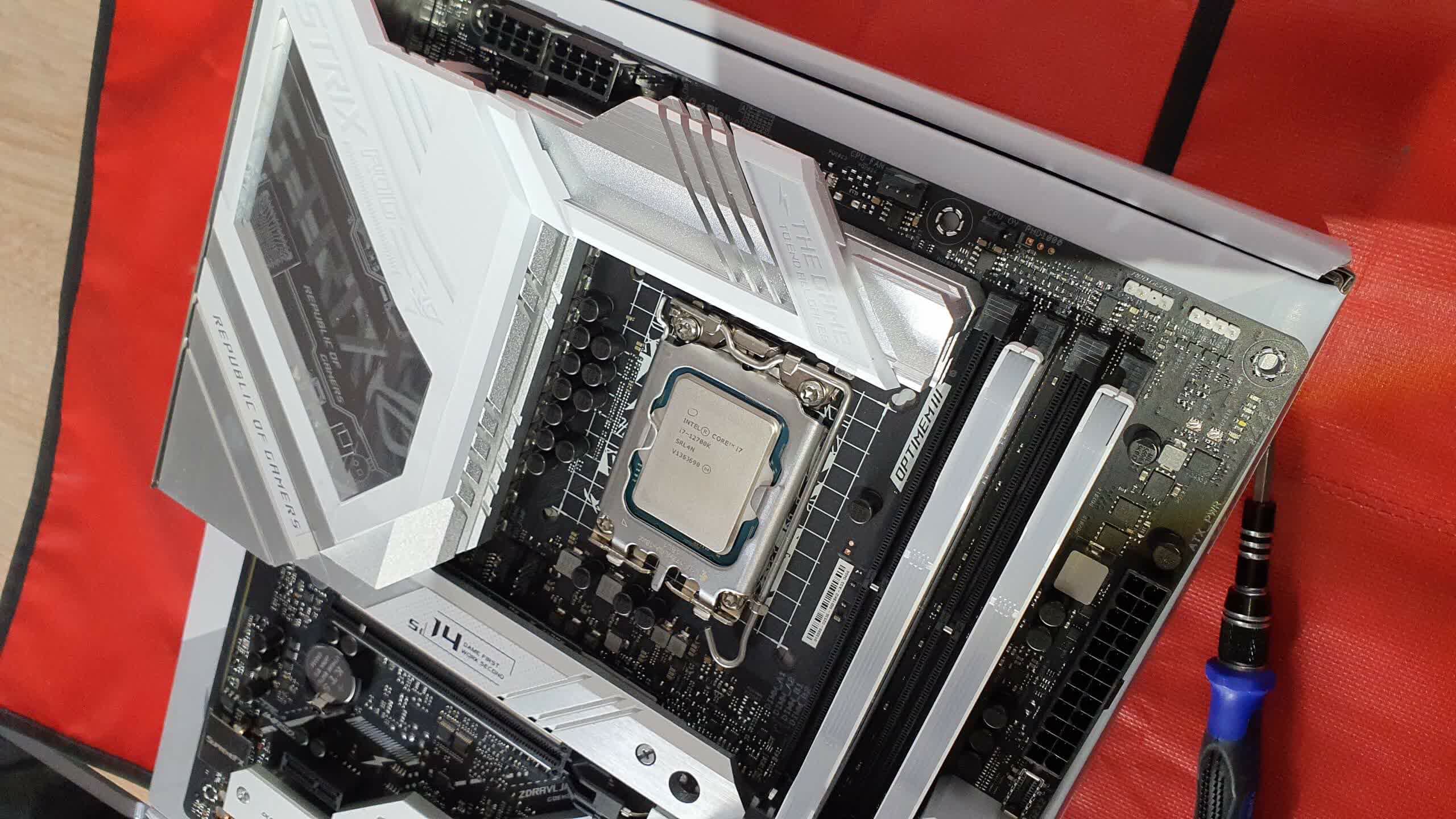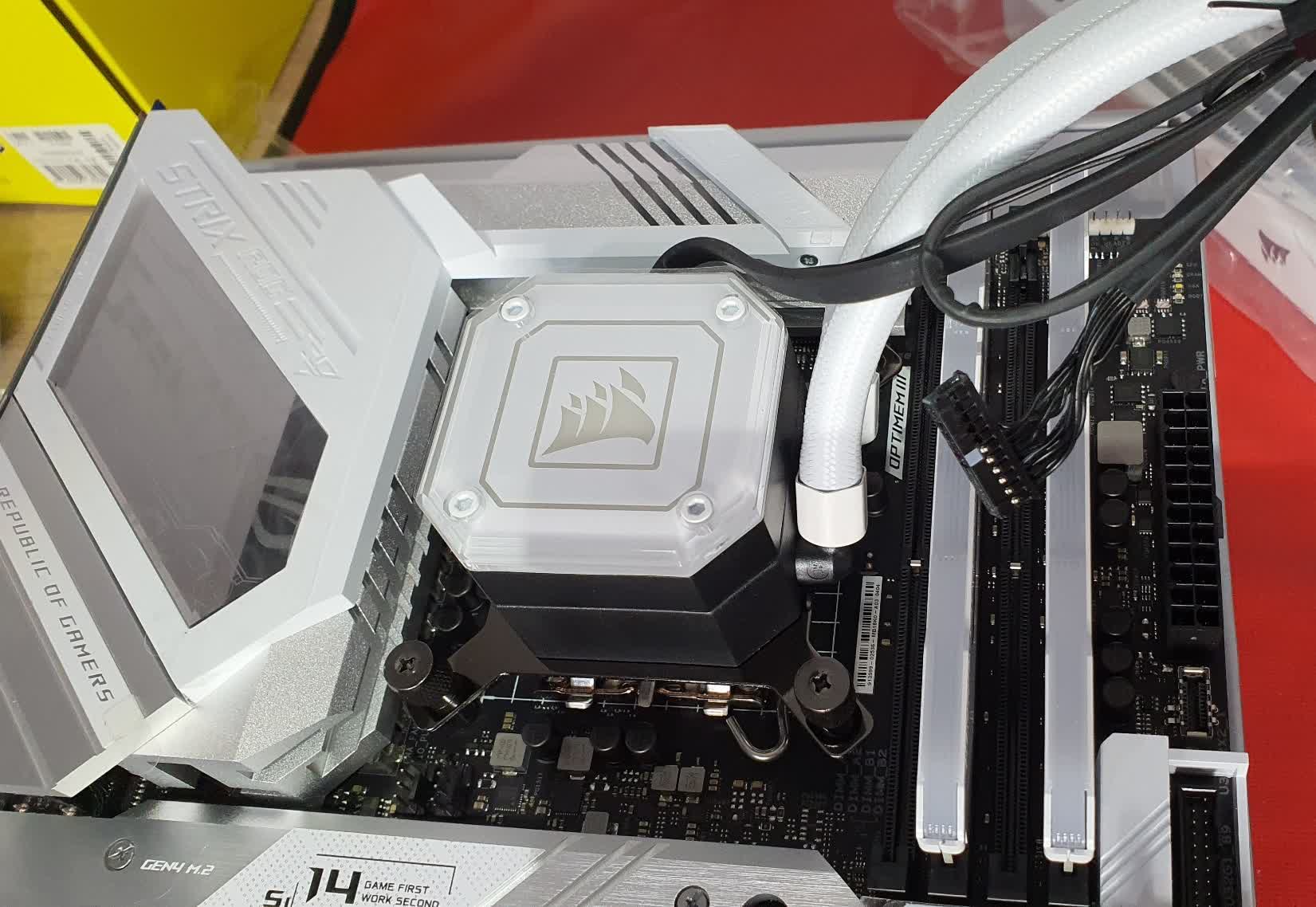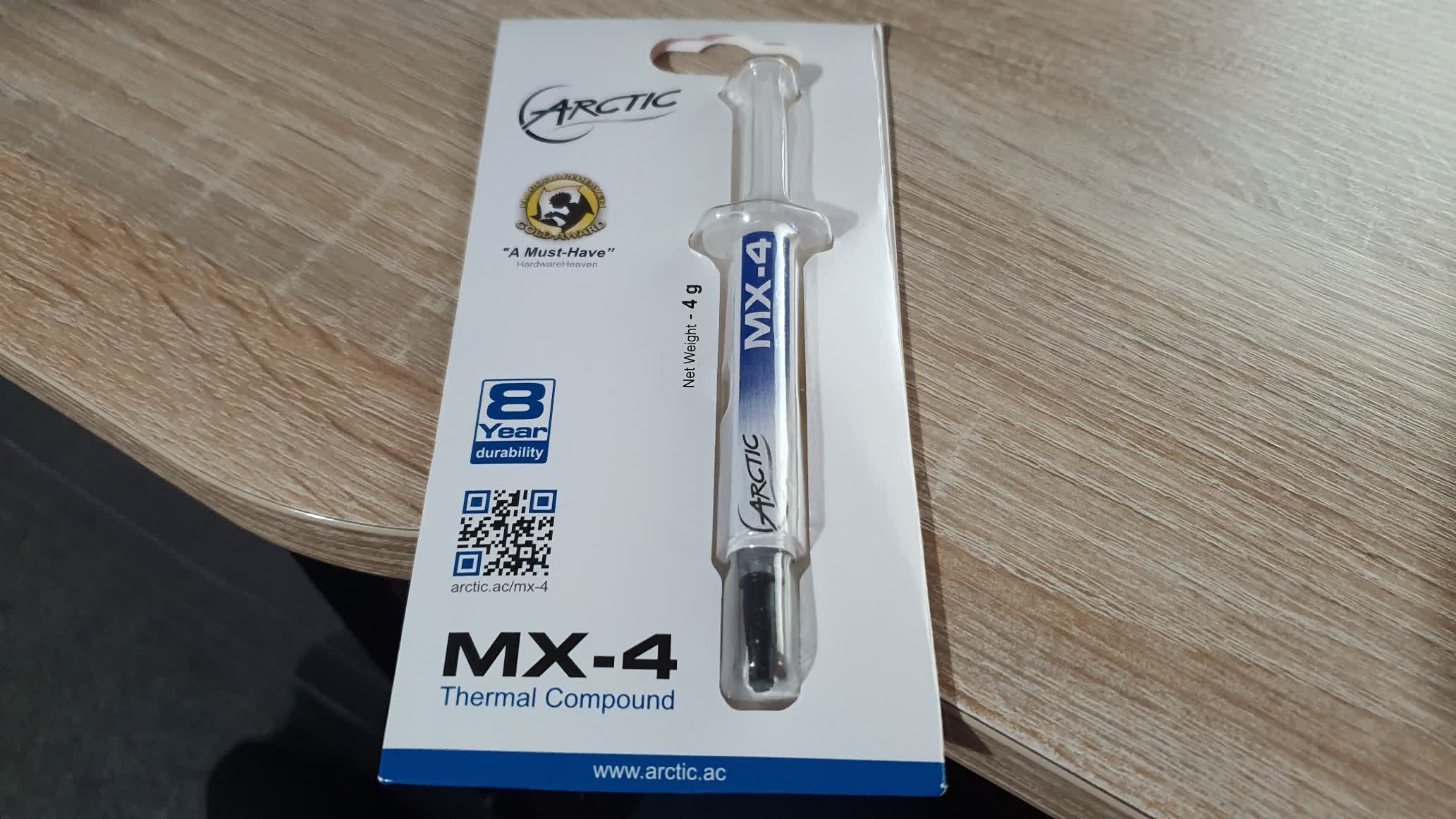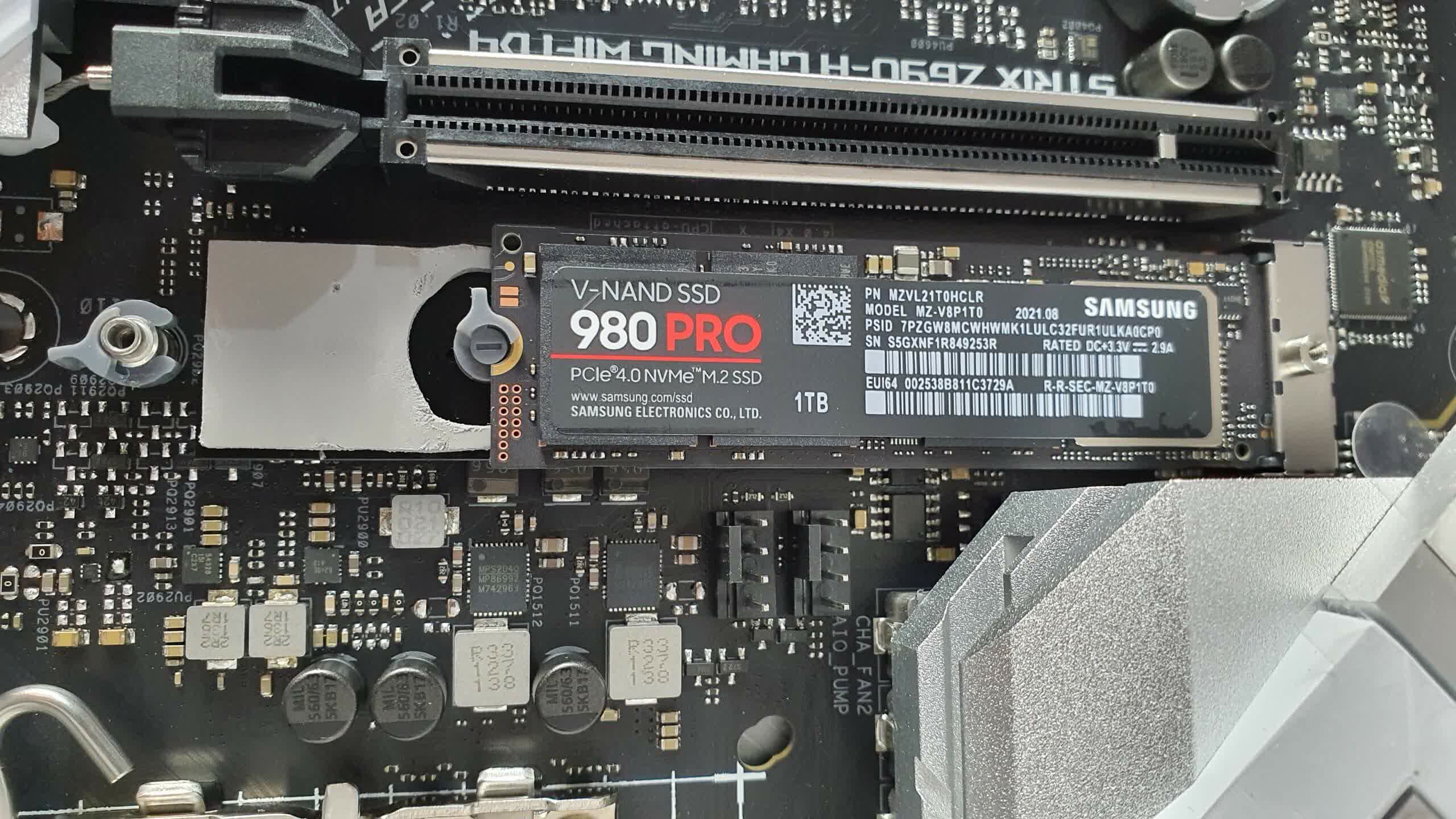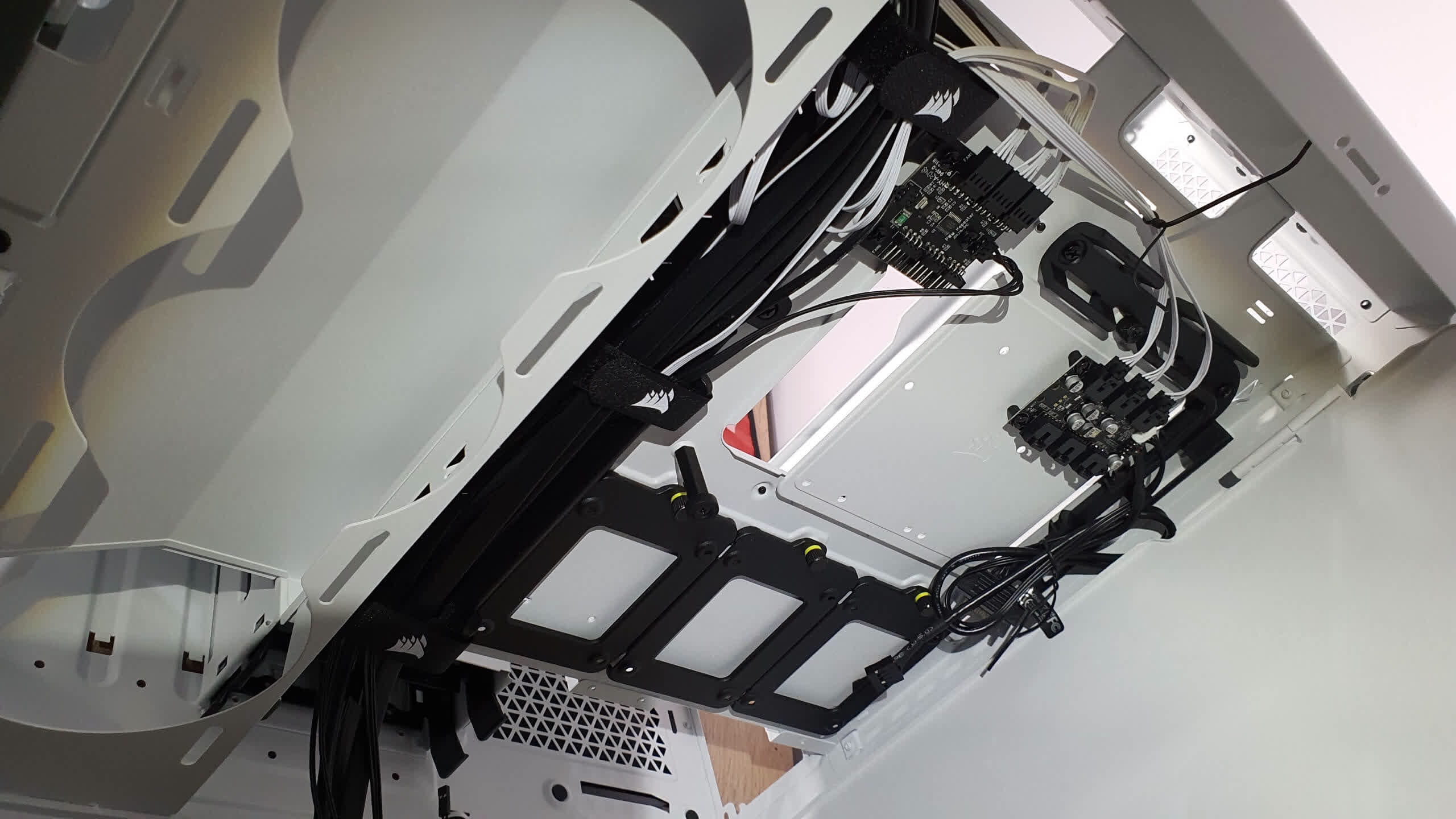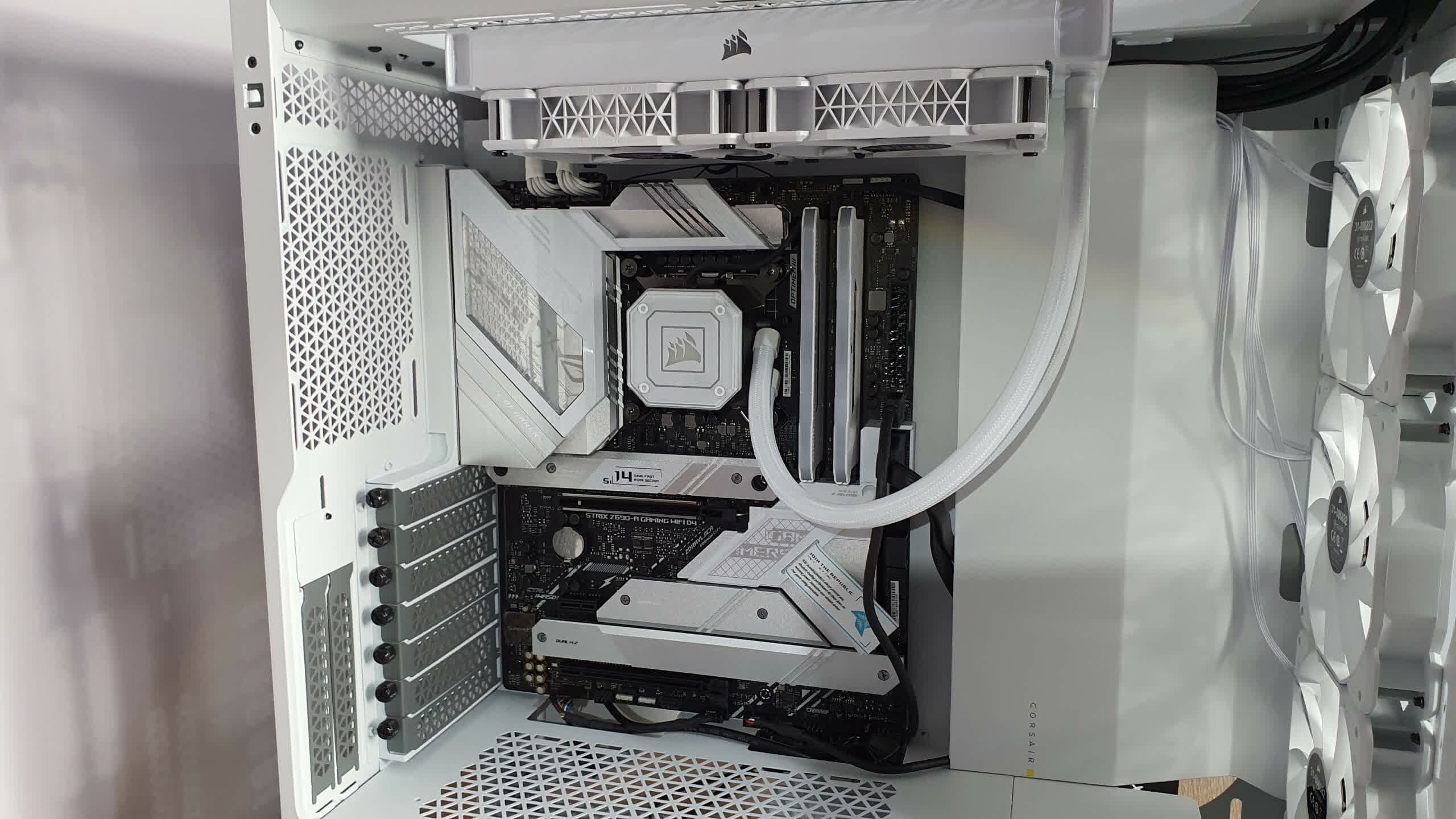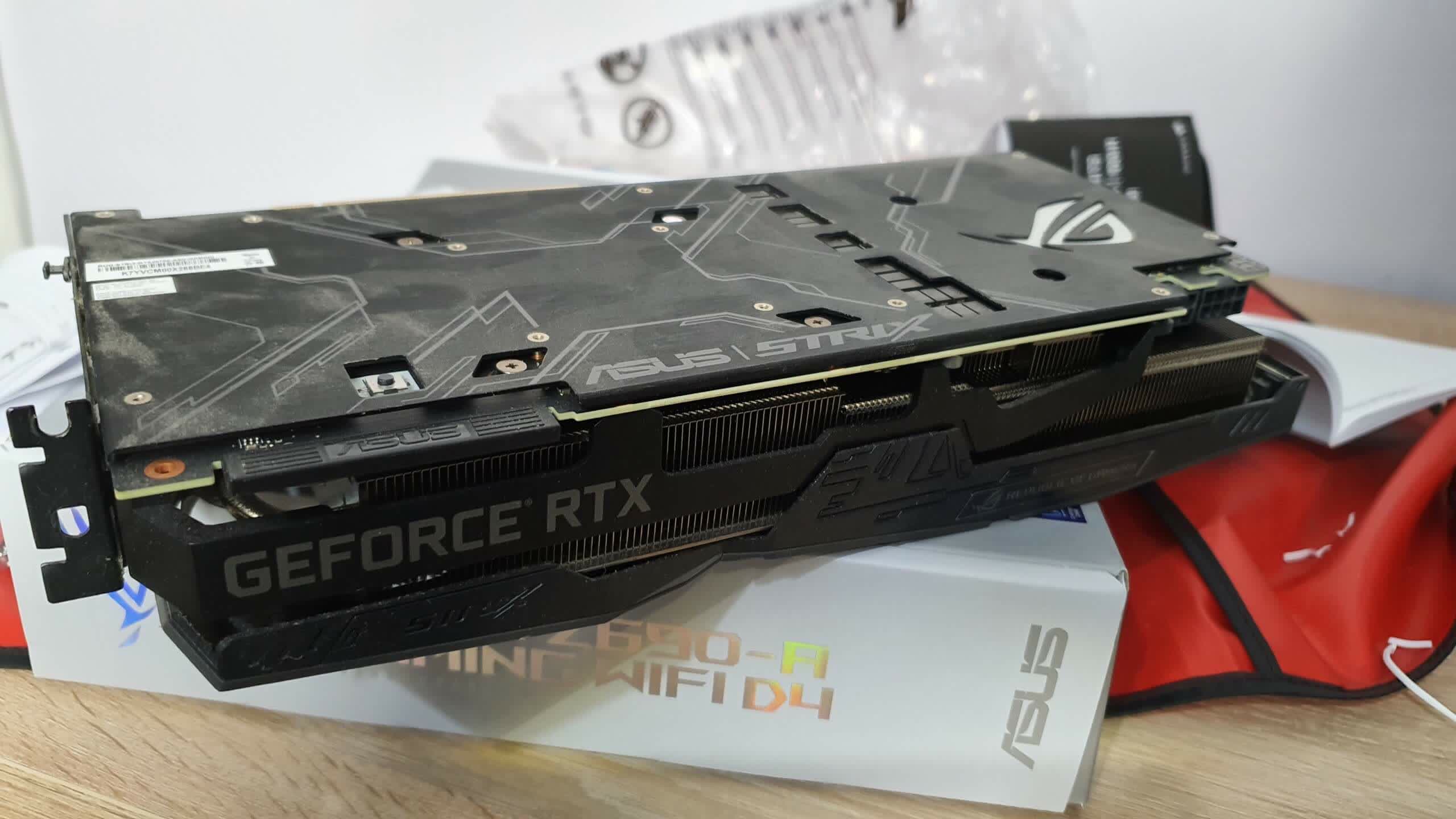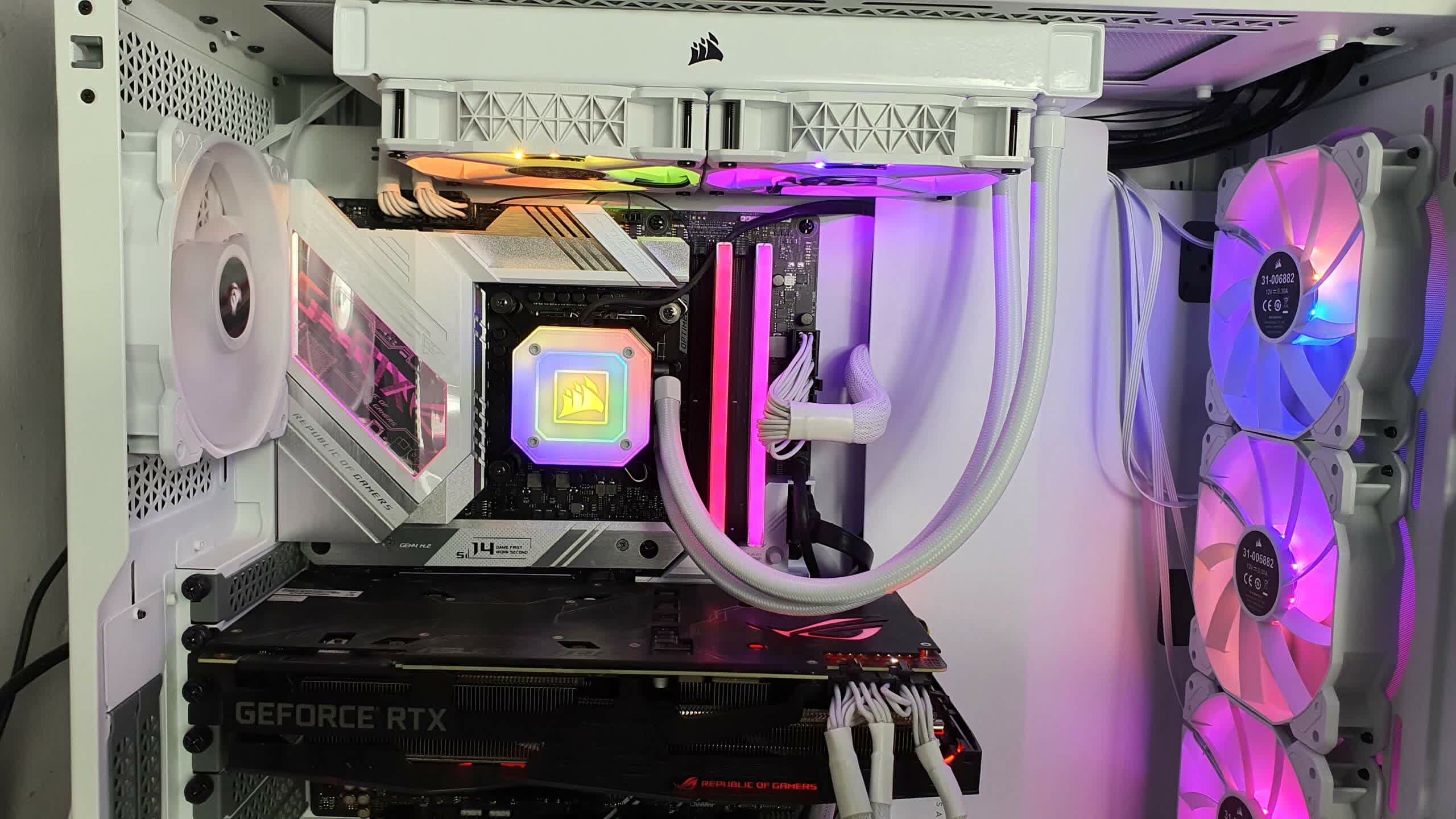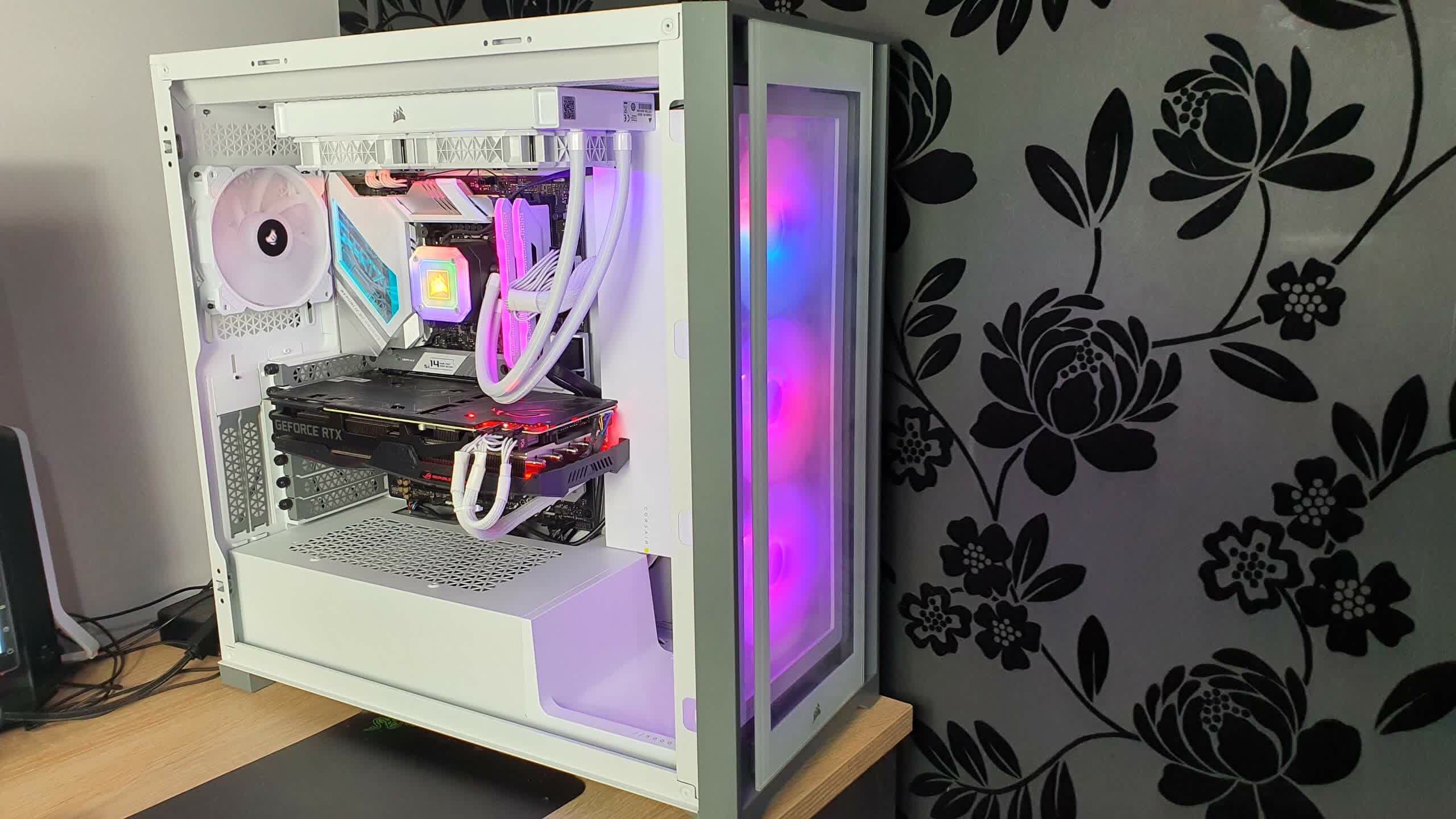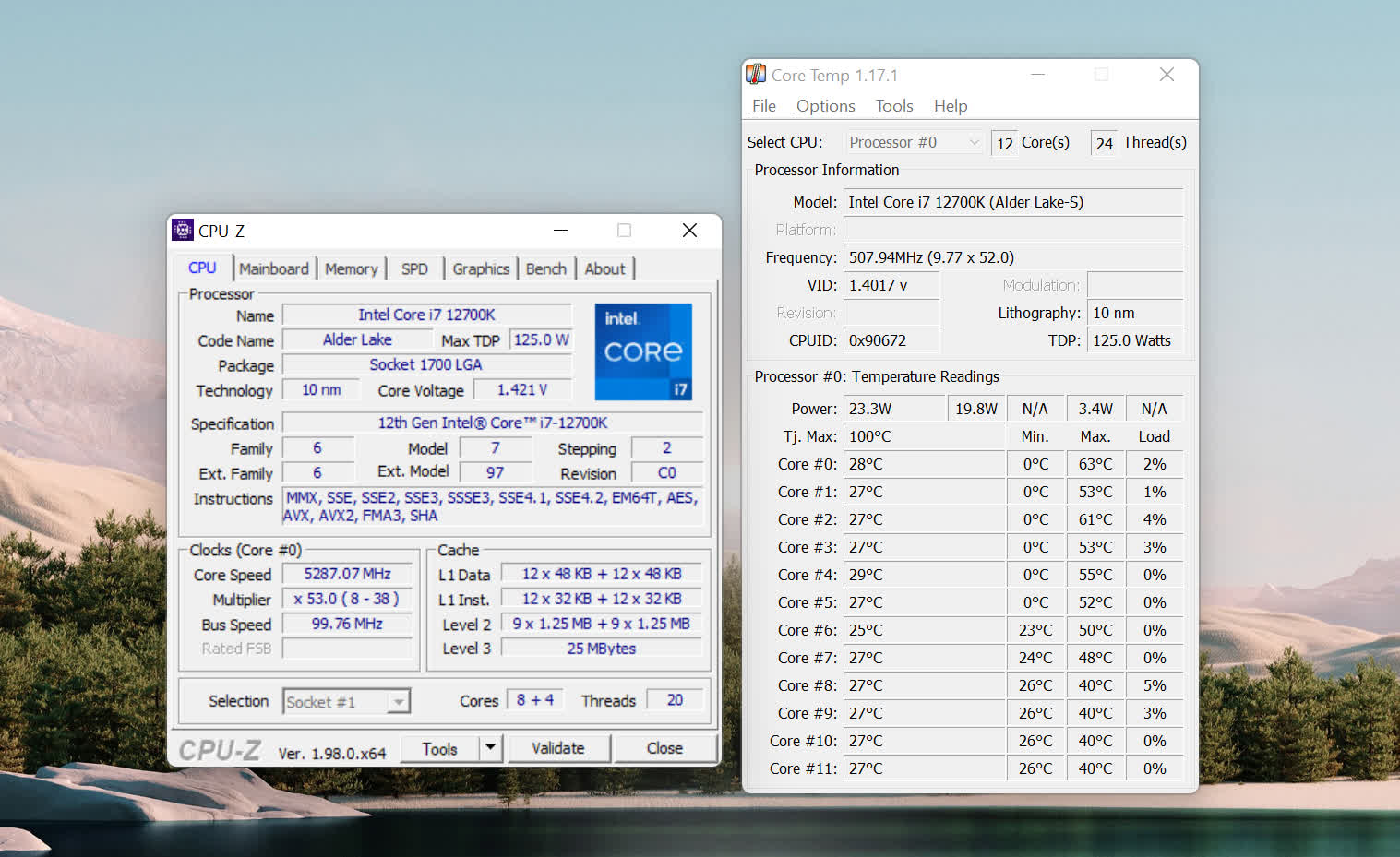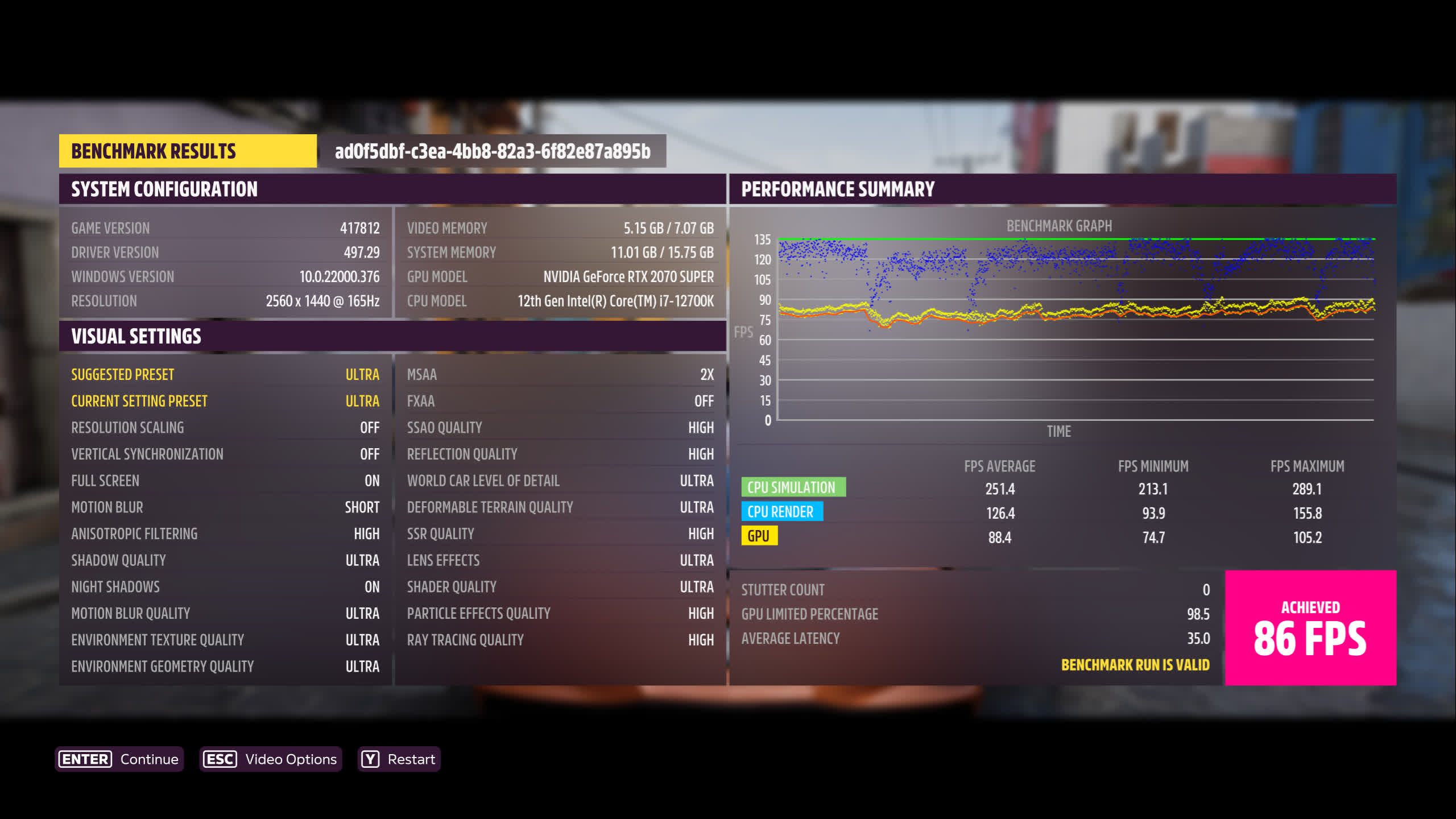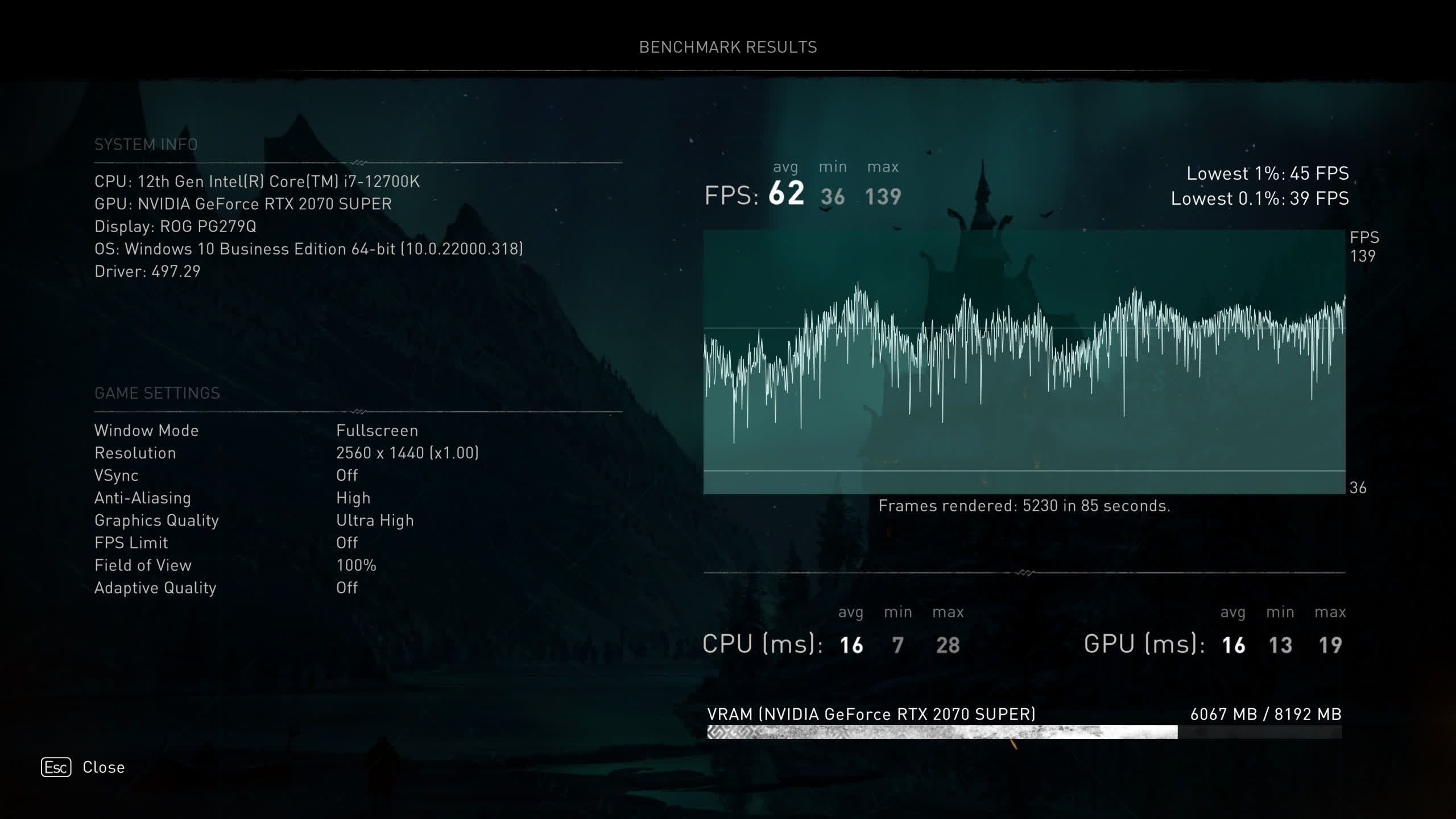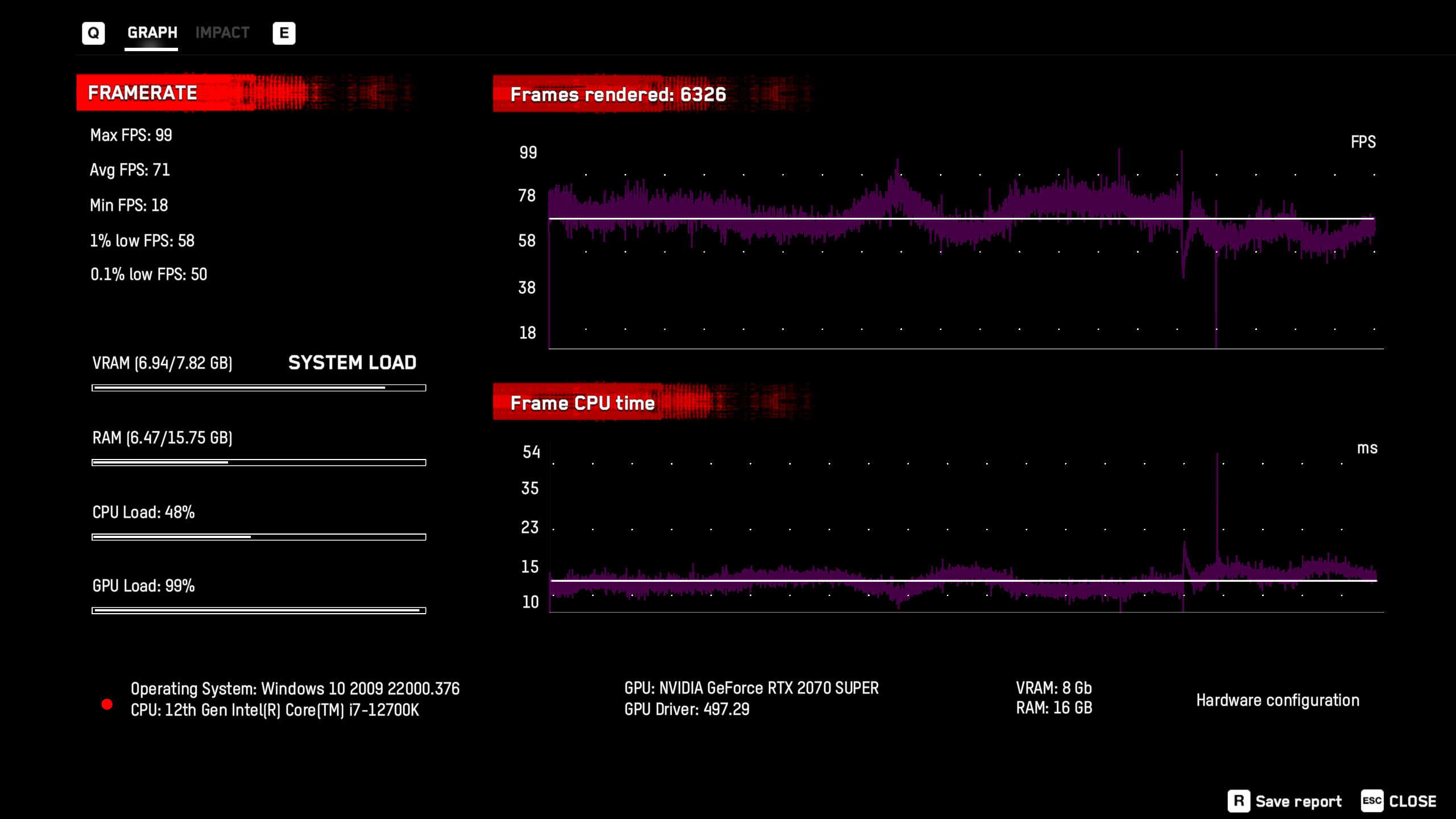Here's a confession: I haven't built a PC from scratch in almost a decade. Sure, I've replaced RAM, added solid-state drives, a new cooler, and several graphics cards, but the last time I sat down with a load of boxed components ready to put together was in 2014 when I built the Core i5-4670K powered rig that's lasted so long.
While my Haswell-era processor has served me incredibly well over the years, it's starting to show its age. Like a punch-drunk boxer who should have retired years ago, the chip grunts and heaves as tasks that it once chewed through have now become a struggle: browsing, booting, and multitasking especially. And then there are the games.
My GeForce RTX 2070 Super was purchased soon after the refreshed Turing line arrived. Asus offered a trade-in on older cards, so I took advantage and waved goodbye to my GTX 1070. The upgrade brought considerable gains to 2019 titles and older. Sadly, the i5-4670K bottleneck is becoming ever more apparent in modern games, especially Forza Horizon 5, which often experiences terrible rubber banding, hitching, and other issues, not to mention the measly 55 fps @1440p with medium settings. My PC's GPU/CPU combo makes it comparable to a Porsche 911 but with a set of wheels from a child's bicycle.
As we owners know, when upgrading a PC, particularly the motherboard and processor, there's also a temptation to overhaul the whole rig, so what better time to do it than on Cyber Monday and using an upcoming birthday as an excuse.
Picking Components, The Buy
The first question is one that every PC builder must face. The conundrum that will decide whether we're on Lisa's Team Red or Gelsinger's Team Blue: AMD or Intel? I've owned both in the past and have loyalties to neither. The only thing that matters is the best option for my use case. The Steam survey reflects just how far AMD has come in recent times – it currently sits at a healthy 32% user share – so a Ryzen 5000 series with its large number of cores and lanes is a tempting offer. However, Alder Lake and its hybrid design is an absolute beast for gaming, which, being honest, is very important to me. Moreover, as we wrote in our review: "Alder Lake is for new PC builders, those doing away with their existing platform for something completely new."
Thankfully, my favorite online PC retailer, Scan, had listed some 12th-gen Intel CPUs during Cyber Monday sales. I opted for the same Core i7-12700K that we praised with a score of 90, looking forward to trying those 12 cores consisting of 8 performance cores with 4 efficiency cores for 20 total threads.
Next comes the choice of motherboard. I chose a bundle that included both CPU and mobo to save some money, meaning my options were slightly limited. The one thing I did know was that it was going to be DDR4 rather than DDR5, given how little extra performance the latter offers in most tasks. There's also the availability/price issue of DDR5 that's almost as bad as what graphics cards are experiencing.
There are a few boards in my price range, but the Asus ROG Strix Z690-A Gaming Wi-Fi D4 stood out: lots of features and connectivity, it's got some great reviews (it won OC3D's Gamers Choice award), and I've always liked the idea of a white build.
The CPU/mobo bundle is priced at £700 with the Cyber Monday discount. It translates directly to $925, but electronics goods in the UK are often a lot more expensive, not least because of the 20% sales tax.
Now for the memory.
I opted for 16GB of Corsair DDR4 Vengeance RGB Pro SL White (3600). Again, I don't feel the extra cost of buying 32GB will be worth it for me. And while it doesn't offer the best performance, the combination of price (£81, or $61), low height, and color make it a compelling buy. It also has RGB lighting with iCue integration, leading me nicely onto the choice of case.
I've had my Corsair Carbide Series 300R for a very long time, but it is looking like a relic of the past. I checked out a few options before deciding to stick with the same maker and go for the Corsair iCUE RGB 5000X.
The case has been well received and offers many positives; a 4.8 out of 5 user rating from almost 10,000 Amazon reviews is encouraging. It comes with plenty of room, good airflow, a USB Type-C port on the font, PSU shroud, lots of cable management options, and three RGB fans. It's a bit pricey at £149 ($200), but that's still considerably cheaper than its UK MSRP of £184 ($243).
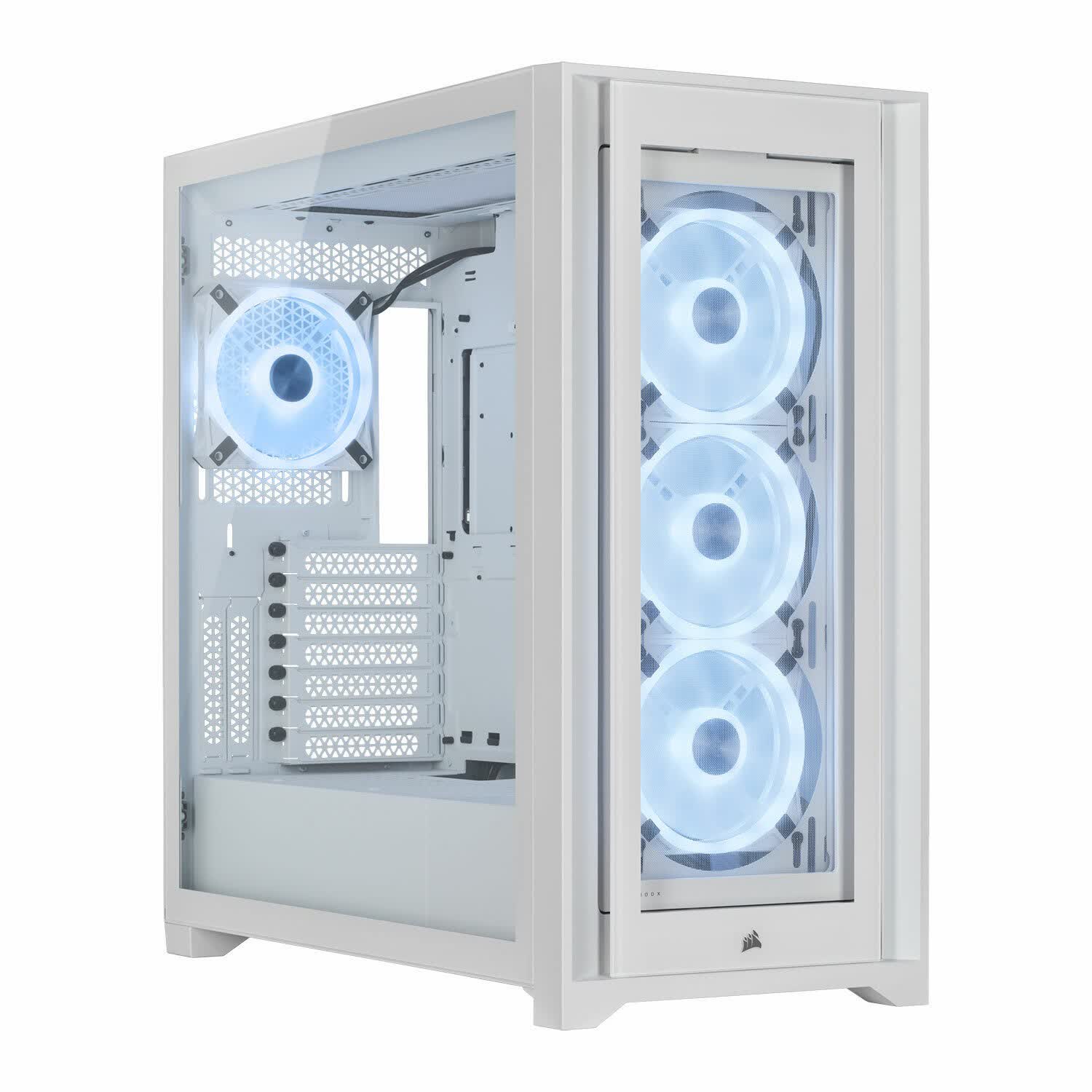
At this point I realize that I've committed to what is essentially a dual-brand build. Wanting more iCue integration and blinding whiteness, I grab a Corsair H100i Elite Capellix AIO cooler that ticks all the boxes. It's the same £149 ($200) price as the case, bringing feelings of guilt, shame, and mild excitement.
Next up is the storage. The plan is to eventually move some of my 2.5-inch SATA SSDs from the old PC into this new rig, but not before installing something that takes advantage of the motherboard's four M.2 slots with heatsinks and PCIe 4.0 support. The answer is a 1TB Samsung 980 Pro. The drive is rated at 7000 MB/s read and 5000 MB/s write speeds, which is something I'm unlikely to need that often, but it's on offer (£125 or $165) and will doubtlessly come in handy at some point. No white version, but the mobo's heatsink covers it anyway.
Finally, comes the beating heart of the PC: the PSU. The most unglamorous part of the computer is the component many people skimp on, leading to problems further down the line. After years of struggling with messy cables, I know a modular model is a must, as is something with enough power and efficiency. I'm tempted by the Corsair (naturally) RMx Series RM650x but decide to pay extra for RMx White Series 750 Watt 80 Plus Gold. Yes, it is white, even though the shroud will hide it.
Of course, there is one vital element missing; this build lacks a graphics card. No, I'm certainly not using the Core i7-12700K's UHD Graphics 770, and a lovely new Asus ROG Strix RTX 3070 White Edition would be the perfect pièce de resistance of the whole build. But we all know why that isn't going to happen.
The chip shortage/scalpers/miners/etc. have given new graphics cards an almost mythical quality – nobody can find them, so are they even real anymore? My particular favorite card was out of stock on every site. There was a non-white version on eBay for £1,299 ($1,717), almost the same price as all the other components combined, meaning my older but still powerful RTX 2070 Super is getting a new home.
A couple of days later and my new PC arrived. Now would usually be the time to start the build, but sadly not. Having already checked, the Corsair H100i Elite Capellix AIO cooler doesn't come with the correct standoffs for Alder Lake's LGA 1700 socket, and I'm still waiting for them to get here from Corsair, which, unlike some other companies, charge for the privilege.
| Component | Price in UK pounds | Price without UK VAT | Price in US dollars (no UK VAT) |
|---|---|---|---|
| Corsair iCUE H100i Elite Cooler | £149.99 | £124.99 | $165.60 |
| Corsair Vengeance RGB PRO SL 3600 (16GB) | £81.70 | £68.08 | $90.20 |
| ASUS Z690-A WIFI motherboard & Core i7-12700K | £699.98 | £583.32 | $772.85 |
| Corsair iCUE 5000X RGB Case | £149.99 | £124.99 | $165.60 |
| Corsair RM750x PSU | £99.98 | £83.32 | $110.39 |
| Samsung 980 Pro M.2 SSD | £124.99 | £104.16 | $165.60 |
| Extra Corsair RGB case fan | £14.99 | £12.49 | $16.55 |
| Corsair AL cooler standoffs | £2.99 | £2.39 | $3.17 |
| Total | £1,315.61 | £1,103.74 | $1,462.36 |
The Build
A day later and the standoffs and the extra fan I bought for the rear of the case are here. Everything is ready. I get out all my tools, clear the desk, and begin. After setting up my anti-static mat and wrist connector, I start with the CPU seating – retention arm lifted, line up arrows, slot the processor in place, lower bracket, start pushing arm back down, hold breath, and it's in without any stomach-churning cracking sounds. A good start.
Now for the cooler. I know that, just like my previous Corsair AIO, the H100i comes with pre-applied thermal paste, but I do have a tube of Arctic MX-4 thermal compound sitting unopened. Unfortunately, a lack of both rubbing alcohol and time leaves me with little choice other than to use the pre-installed goop, though I promise to remove it and apply the good stuff at a later date if the temperatures aren't satisfactory.
Next is the memory, probably the most straightforward component of all to install. A simple click and push do the trick.
Over to the M.2 SSD. Thanks to my ancient old board, this is a new experience for me. Removing the heatsink is the first step, followed by confirming the drive's physical size. It's then a matter of twisting the correct latch, slot in the 980 Pro, and turning the latch back into place. Easy.
Right, the fun part. The Corsair iCUE RGB 5000X is by far the largest and most modern case I've ever worked in, which makes the whole process so much easier than I remember. The board standoffs fit smoothly, screws are tightened, and I praise whoever thought of pre-mounted I/O shields.
I recall from experience that it's better to attach all the cables and wires to the mobo before screwing the radiator to the case's roof, lest it gets in the way and makes life difficult. The case has a built-in fan hub and four fans, all with separate RGB connections. Combined with the AIO cooler's command core unit, the two radiator fans, and the front panel I/O cables, there are a lot of wires to contend with, and that's before adding the PSU.
It is nice to see, however, that the many cables and motherboard ports are so clearly labeled these days – the system panel header is much easier to navigate – while the 5000X's numerous straps, funnels, grommets, and holes make routing everything so much easier!
Power supply time. I once again feel elated at buying a modular unit, having come from a non-modular PSU in my previous build that looked like an angry, dusty octopus. Firstly, I connect the 24-pin ATX cable. I've decided to keep the cover on the right side of the case to make everything cleaner, which it does, but getting the thick cable to bend back on itself without popping out of the mobo socket is no easy task. Next is the 8-pin EPS connector; there's something else that's new to me: this board has two of them. Both are used as I do intend to overclock it.
With the M.2 being the one drive currently in place, just one SATA power cable is needed for the fan header and Corsair Command Core Unit.
I open up my old case and am appalled at the dust levels, though I reason that I'll be able to see debris building up in the new one. The Asus ROG 2070 Super pops out, and it's given a blast from the air canister before being put into its new setting.
After a bit of cable tidying, it's ready. More could be done to make it all cleaner and tighter, which I'll do later, but I'm happy that this took around an hour. Assuming it will POST.
I connect it to the mains, click the PSU switch from O to I, hold my breath for what feels like the third time since starting this project, and hit the power button. It seems that my silent prayer to gigabytus, the God of PCs, worked. I hit delete to enter the BIOS and check everything is okay before resetting with the Windows 11 install USB inserted.
In addition to the AMD or Intel CPU decision, many people putting together a new build today might have to decide whether to also upgrade to Windows 11. Our own testing shows there isn't too much of a difference between the two operating systems in terms of application and gaming performance – with a few outliers – when used with Alder Lake. Virtually all the games that had been listed with 12th-gen DRM issues are now patched, and the update that addresses slower SSD speeds has also arrived, so it's a matter of personal preference. I've picked the latest OS partly because of work reasons and partly because I want a fresh install anyway.
The Benchmarks
After the quicker than expected installation process, the PC boots up with a speed that takes me by as much surprise as the blinding light show emanating from the case. As for the initial Windows 11 impressions, I'd call it different but familiar in many ways.
It's now time to reboot, enter the BIOS, enable XMP, and stick on the AI overclock; again, I intend to tinker with the settings at a later date to squeeze out more performance.
It's now time to download a slew of apps and programs: Asus GPU Tweak II, iCUE, Core Temp, and all the gaming platforms, to name a few. I'm impressed to find that Core Temp is reading around 26 - 27 degrees centigrade (78 - 80 F) while idle, and that's what all the fan profiles set to "balanced." I set up my GPU Tweak II user profile and start with the game that prompted me to upgrade: Forza Horizon 5.
It's... it's amazing. The game detects my PC and auto-selects Ultra settings (1440p); no more piddling Medium @ 55fps for me. I run a benchmark and feel a single tear when the result comes back with 86fps and zero stutter count. Playing with no rubber banding combined with the smoothness/high refresh rate of my Asus PG279 monitor has brought a new lease of life to the game, and I suspect it will do the same with many others.
Next up is Assassin's Creed. Bizarrely, Intel still lists this as one of the games affected by DRM issues when running on Alder Lake machines, yet it works fine. I decide to see how far I can push it by selecting the Ultra High option, not expecting it to be playable on something lower than an RTX 3070. The result? An astounding 62 fps, an improvement of around 20 fps. A game that was already beautiful looks incredible and runs as smooth as butter. Where will I find the time to play all these titles?
Finally, I boot up Watch Dogs: Legion and go for the Very High preset; that's no DLSS with the GPU-intensive shadows and reflections turned quite high. I still get an impressive 71 fps. Again, that's about 20 fps more than what my old rig could manage. Turning DLSS to Quality, knocking the shadows and reflections to Medium, and pushing geometry, environment and texture up to Ultra makes the game look stunning and still returns 99 fps.
The Bottom Line
Sadly, as most people know, there's likely never been a worse time to build a new gaming PC from scratch, but I had little choice given how much of a hindrance my current computer had become. Paying around $1,740 (with shipping and UK VAT) for a PC without a graphics card is a kick to the crotch, even when considering the high price of a new Alder Lake chip and the Z690 motherboard.
However, the justification is that the chip shortage is likely to last a long time – at least 2023, according to Intel's CEO – so when would be a good time to upgrade? And the difference it has made to gaming performance is astounding, much more than I expected from a CPU bottleneck. I've already reinstalled The Witcher 3: Wild Hunt alongside several visual mods, with Cyberpunk 2077 and Metro Exodus next on the list, and I look forward to tweaking the settings to tease a bit more power out of the components. It's these moments when you can really understand why the PC was voted the greatest piece of hardware of all time.
It's a shame about the lack/price of graphics cards, but, if you're upgrading from an ancient CPU and already have a decent GPU, the gaming performance improvement is potentially just as good.
Shopping Shortcuts
- Intel Core i7-12700K on Amazon
- Asus ROG Strix Z690-A Gaming Wi-Fi D4 on Amazon
- Samsung 980 Pro PCIe 4.0 NVMe SSD on Amazon
- Corsair DDR4 Vengeance RGB Pro SL White (3600) on Amazon
- Corsair H100i Elite Capellix AIO Cooler on Amazon
- Corsair RMx White Series 750 Watt 80 Plus Gold PSU on Amazon
- Corsair iCUE RGB 5000X White Case on Amazon
- Nvidia GeForce RTX 3070 on Amazon
